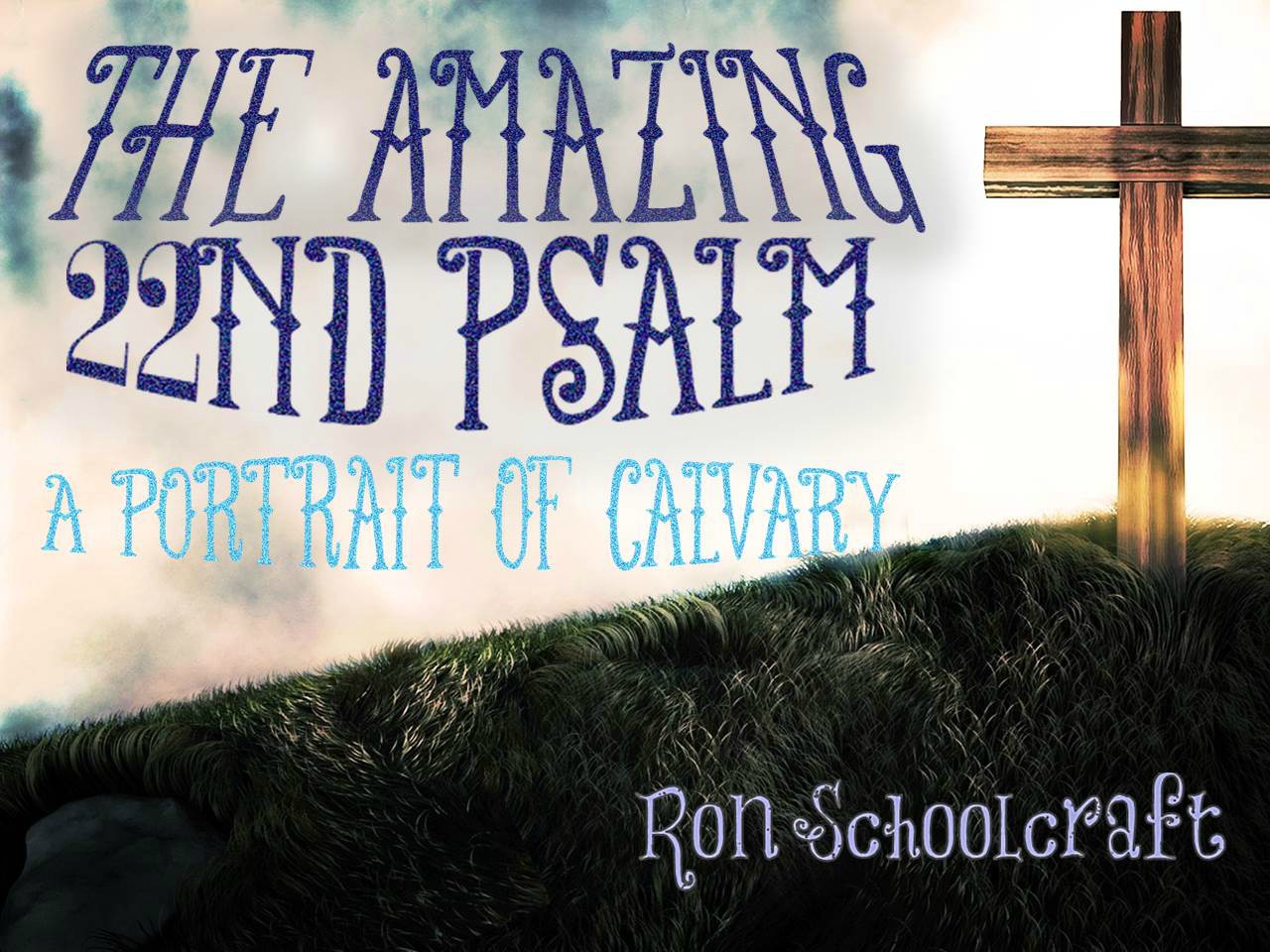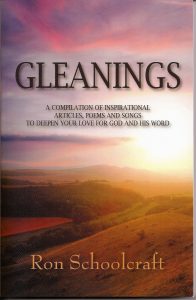
By Ron Schoolcraft
The twenty-second Psalm seems like a dwarf when compared to its more popular neighbor, the twenty-third Psalm. We can easily overlook Psalm 22 as we breeze past it seeking the comfort and strength from everyone’s all-time favorite, the Shepherd Psalm.
What is so amazing about Psalm 22? Simply this: although written 1,000 years before Christ, it portrays in graphic detail the express image of His suffering at Calvary — long before the Romans practiced crucifixion.
Fulfilled prophecy has always been one of the greatest proofs for the divine inspiration of the Word of God. Sprinkled throughout the Old Testament are many prophetic passages that were fulfilled in the New Testament. They often occur in single passages such as Genesis 3:15, Isaiah 7:14, Micah 5:2, and Zechariah 9:9. But, amazingly, the twenty-second Psalm is jam-packed with more than twenty prophetic verses. This surely ranks it along with Isaiah 53 as one of the richest veins of fulfilled prophecy in the Bible — a veritable gold mine of divine inspiration.
Psalm 22:1 opens with the verbatim words Jesus cried in agony on the cross: “My God, my God, why hast thou forsaken me?” (See Matthew 27:46.) In verse 2, the words, “I cry in the … night season,” probably refer to the three-hour darkness at the height of His suffering. Verse 3 begins, “Thou art holy” reflecting why He felt forsaken, for He was made “to be sin for us” (II Corinthians 5:21), and a holy God “canst not look on iniquity” (Habakkuk 1:13).
I Am a Worm?
A profound insight is hidden in verse 6: “But I am a worm, and no man.” Surely this cannot be prophetic of Christ? But it is! The Hebrew word for “worm” is translated as “crimson” in Isaiah 1:18: “though they [your sins] be red like crimson, they shall be as wool.” It refers to the crimson grub worm from which the ancient Israelites obtained their red dyes. Henry Morris in The Defender’s Study Bible notes, “The female worm of this species, when laying her eggs, affixes her body to a wood surface on which she will die after the young are born.” The scarlet worm stains the wood, herself and her young a crimson red! In like manner, the children of God are redeemed by “the precious blood of Christ” (I Peter 1:19). The crimson worm paints a perfect picture of Jesus’ sacrificial death giving us eternal life!
The taunting of Christ on the cross is vividly portrayed in verses 7 and 8: “All they that see me laugh me to scorn: they shoot out the lip, they shake the head, saying, He trusted on the Lord that he would deliver him: let him deliver him, seeing he delighted in him.” (See Matthew 27:39, 43.)
Verse 10 alludes to Christ’s miraculous conception and birth: “I was cast upon thee from the womb: thou art my God from my mother’s belly.”
Verse 13 declares, “They gaped upon me with their mouths, as a ravening and a roaring lion.” Satan is referred to as “a roaring lion” (I Peter 5:8). Christ was also “compassed” by bulls, dogs and unicorns in verses 12, 16 and 21.This is a horrible picture of demon-influenced men or wicked spirits gleefully taunting and celebrating the death of Christ, unaware that the head of the serpent was here receiving its lethal “bruise” (Genesis 3:15). The tried Victim was here becoming the triumphant Victor. “Having spoiled principalities and powers, he made a show of them openly, triumphing over them in it” at “his cross” (Colossians 2:14-15). “That through death he might destroy him that had the power of death, that is, the devil” (Hebrews 2:14).
Gambling for His Garments
The excruciating sufferings involved in the crucifixion are revealed in verse 14: “I am poured out like water, and all my bones are out of joint: my heart is like wax; it is melted in the midst of my bowels.” When the spear pierced His side, blood and water gushed out (John 19:34). Evidently, the pull of gravity, coupled with His writhing in agony and muscular cramping, caused a separation of His bone joints and a collapse of His heart cavity.
The Lord’s extreme thirst is pictured in verse 15: “My tongue cleaveth to my jaws.” Verse 16 declares, “For dogs have compassed me: the assembly of the wicked have enclosed me: they pierced my hands and my feet.” The “dogs” could possibly refer to sodomites as the parallel construction of Deuteronomy 23:1 7-18 implies. (See also Revelation 22:15.) His pierced hands are clearly described in John 20:25-27.
Verse 18 foretells, “They part my garments among them, and cast lots upon my vesture.” This bizarre action was one of the few events that God chose to highlight in all four gospels (Matthew 27:35; Mark 15:24; Luke 23:34; John 19:24). Matthew and John specifically state that it was done to fulfill this very verse of Scripture.
Time to Praise Him
The focus of Psalm 22 abruptly changes from that of suffering to praise in verse 22: “In the midst of the congregation will I praise thee.” He paid the price for our sins and now it is time to praise Him. It is noteworthy that this is the first mention of the verb “praise” (hallal) in the Psalms, which is Israel’s book of praises. The theme of praise continues through verses 23-27: “Ye that fear the Lord, praise him … glorify him … My praise shall be of thee in the great congregation … The meek shall eat and be satisfied: they shall praise the Lord that seek him … and all the kindreds of the nations shall worship before thee.” How very appropriate to praise our Lord and Savior on this awesome occasion of His triumphant victory over death and sin.
It Is Finished
Verses 30 and 31 provide a fitting conclusion to this psalm: “A seed shall serve him … They shall come, and shall declare his righteousness unto a people that shall be born, that he hath done this.” His seed, which is born again because of His sacrificial death, will “declare his righteousness” and His sacrificial death to “a people that shall be born,” and they will be born again of water and the Spirit (John 3:5-7). They will declare “that he hath done this” — literally, “It is finished” (John 19:30).
Psalm 22 clearly shows that Calvary was not an afterthought — it was God’s plan. And best of all, He did it for us! Now, “The Lord is my shepherd” (Psalm 23:1) means more to me than ever before. Praise God for His amazing twenty-second Psalm!
This article was published under the title, “A Portrait of Calvary,” in the Pentecostal Herald, April, 1998.
This article “The Amazing 22nd Psalm” was excerpted from: Gleanings by Ron Schoolcraft. 2012. It may be used for study & research purposes only.




1 thought on “The Amazing 22nd Psalm (Entire Article)”
Comments are closed.